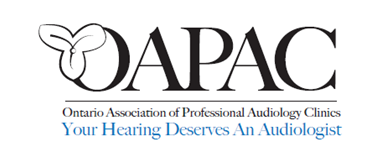During the Holidays, Be Aware of Toys that Could Harm Your Child’s Hearing

Audiologist using otoscope to examine baby’s ear
RESTON, Va., November 29, 2017—The American Academy of Audiology warned the public to be careful in purchasing loud and noisy toys for children this holiday season. Recognizing that tiny ears are particularly susceptible to hearing damage, it is important to check noise levels before purchasing them. “Many parents are concerned about sun damage, as they should be, and take the necessary precautions in using sun screen but few are aware of the dangers that loud noise can cause to children’s hearing health. Parents often fail to protect their children and the result can be irreversible hearing loss,” explained Jackie Clark, Ph.D., president of the American Academy of Audiology. The inner ear contains delicate hair cells which do not regrow. Once these are worn down by noise, the result is permanent hearing damage.
“Hearing damage can be from a one-time exposure or cumulative exposures,” said Craig Kasper, Au.D., a member of the American Academy of Audiology and an audiologist practicing at New York Hearing Doctors in Manhattan. Kasper has more than 20 years of experience in the field of noise-induced hearing loss.
The Sight & Hearing Association recently released their “Noisy Toys List 2017” with a round-up of 22 toys that were tested. Of those, 18 fell above the recommended 85 decibel noise level when held up against an ear. When held 10 inches away, the noise levels dropped. “It’s important to note that the 85-decibel level threshold that the National Institute for Occupational Safety and Health recommends is for people with long exposure to the sound for eight hours or more,” Kasper stated. “Having said that, parents and anyone buying toys for children need to be aware of loud noises, particularly toys that have loud bursts—cap guns, popping balloons, air horns, etc.”
A study released in January, 2017 by researchers with the University of Alberta in Canada, determined the noise levels of popping balloons. They studied popping them with a pin, blowing them up until they ruptured and crushing them until they burst. The ruptured balloons clocked in at 168 decibels, four decibels louder than a 12-gauge shotgun.
“Toy noise levels should also be tested with children in mind and not assume that toys will be held at a distance from delicate ears,” Kasper added.
Kasper advises his clients to use phone apps to test the sound levels of toys before buying them. “If they come in at 85 decibels or higher, don’t buy them. It isn’t worth the risk.”
While hearing loss numbers are rising in adults in the U.S., the total number of children with some type of hearing loss is unknown and many cases go undiagnosed or misdiagnosed.
“A child with just minor hearing loss can be missing 50 percent of the classroom discussion,” said Clark. “There are children who have been diagnosed with a learning disability when really what they need are hearing aids.”
Lack of hearing can lead to behavioral issues, lack of focus, even depression in children. Children with hearing loss often don’t recognize that they can’t hear and parents don’t always know the signs.
“Loud toys aren’t just annoying to parents, they can be a danger to children as well,” added Kasper. “Parents should exercise caution when buying toys with sound, including video games. With toys and games where you can turn the sound down, set the sound at an acceptable, non- harmful level and teach children to keep them at that level. Also, be vigilant about any signs that may indicate your child is having difficulty with their hearing.”
## #
Editor’s Note: Craig Kasper, Au.D. and Jackie Clark, Ph.D. are available for interviews. Kasper has appeared on national television and spoken on toy sound levels and hearing loss prevention. To schedule an interview, please contact Vicki Bendure at 540-687-3360 or vicki@bendurepr.com
THIS NEWS RELEASE CAME FROM THE AMERICAN ACADEMY OF AUDIOLOGY AND CAN BE ACCESSED BY CLICKING HERE.

